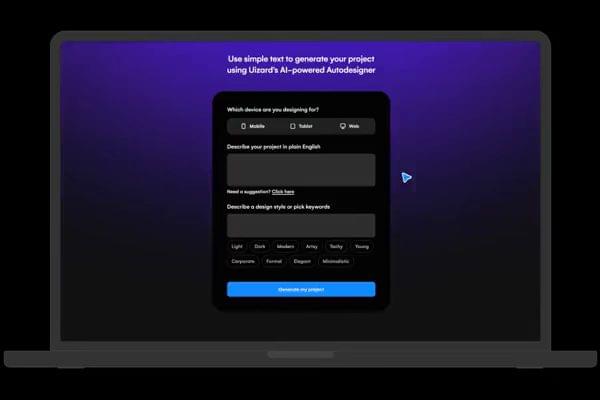
The Next Leap in Development: How Integrated GPT Agents Are Redefining the Software Lifecycle
The Dawn of the Autonomous Developer Assistant: A New Era for Code Generation and Automation
The evolution of AI in software development has been nothing short of meteoric. From simple syntax highlighting and code completion to the sophisticated suggestions of tools like GitHub Copilot, developers have steadily been equipped with more powerful digital assistants. Today, we stand at the precipice of another revolutionary shift, moving beyond mere code suggestion to fully autonomous, agent-based workflows integrated directly within our development environments. Recent advancements in foundational models are powering a new class of GPT agents capable of understanding complex, multi-step tasks, from initial code creation and testing to deployment and infrastructure management. This paradigm shift signals a move from “co-pilot” to “collaborator,” where AI agents can independently reason, plan, and execute entire development cycles based on natural language prompts. This latest wave of GPT Agents News is not just an incremental update; it represents a fundamental change in how we build, test, and ship software, promising unprecedented gains in productivity and innovation.
From Snippets to Solutions: The Architecture of Integrated GPT Agents
The integration of next-generation GPT models into platforms like Visual Studio Code and services like Azure AI Foundry marks a significant milestone. This isn’t just about embedding a more powerful language model; it’s about creating a cohesive ecosystem where the model can act as an autonomous agent with access to a developer’s tools and environment. Understanding the key components of this architecture is crucial for appreciating its impact.
Core Capabilities: Advanced Reasoning and Multi-Step Execution
At the heart of this new wave of developer tools lies a foundational model with vastly improved reasoning and planning capabilities. Unlike its predecessors, which excelled at single-turn, stateless code generation (e.g., “write a function to sort a list”), these new GPT Code Models can deconstruct a high-level objective into a sequence of executable steps. For example, a prompt like “Build a REST API for a simple blog, create unit tests, and containerize it” triggers a complex chain of actions:
- Task Decomposition: The agent first breaks down the request into sub-tasks: 1) Scaffold a web framework (e.g., Flask/Express). 2) Define API endpoints (GET, POST). 3) Write business logic. 4) Write corresponding unit tests. 5) Create a Dockerfile. 6) Generate a README.md.
- Stateful Awareness: The agent maintains context across these steps. When writing the Dockerfile, it knows which dependencies were added to
requirements.txtorpackage.jsonin a previous step. This statefulness is a critical departure from earlier models. - Tool Usage: The agent can interact with the IDE’s terminal to run commands like
pip install, execute test suites (e.g.,pytest), and even interact with version control (git commit). This transforms the model from a text generator into a true digital actor within the development loop.
This leap in capability is a direct result of advancements in GPT Architecture News, focusing on models trained not just on code, but on the *process* of software development, including commit histories, bug reports, and CI/CD logs.
The Role of the Integrated Environment: VS Code and Azure AI Foundry
The power of these agents is unlocked by their deep integration into the developer’s native environment. This is where platforms like VS Code and cloud services like Azure AI Foundry become indispensable.
VS Code Integration: The IDE is no longer just a text editor; it’s the agent’s sensory and motor system. The agent can read the file system, open and edit multiple files, access the integrated terminal, and receive feedback from linters and debuggers. This tight loop allows for rapid iteration. If a test fails, the agent can read the error output, navigate to the problematic code, and attempt a fix—all without human intervention.
Azure AI Foundry: This service acts as the backbone for building, managing, and deploying these sophisticated agents. It provides the necessary infrastructure for GPT Deployment News and customization. Developers can use the Foundry to:
- Select and Customize Models: Choose from a range of state-of-the-art models and fine-tune them on proprietary codebases for domain-specific tasks. This is a key piece of GPT Custom Models News, enabling companies to create agents that understand their unique internal libraries and coding standards.
- Orchestrate Agentic Workflows: Define complex workflows that chain together multiple AI calls, tool usage, and human-in-the-loop approval steps. This is where the true power of automation is realized.
- Monitor and Evaluate: Track agent performance, cost, and accuracy using built-in analytics. This addresses critical concerns around GPT Benchmark News and ensures reliability in production environments.
A Practical Walkthrough: Building an Application with a GPT Agent

To truly grasp the power of this new paradigm, let’s walk through a real-world scenario. Imagine a developer tasked with creating a microservice that provides weather data.
Step 1: The Initial Prompt (Natural Language Scaffolding)
The developer opens a new workspace in VS Code and invokes the agent with a prompt:
“Create a Python FastAPI microservice with a single GET endpoint `/weather/{city}`. It should accept a city name, call an external weather API to get the current temperature, and return it in a JSON response. Include robust error handling for invalid cities or API failures. Also, write comprehensive unit tests using pytest and mock the external API call. Finally, create a Dockerfile for deployment.”
Step 2: The Agent’s Autonomous Workflow
The agent now begins its work, transparently showing its plan and progress in a dedicated panel:
- PLANNING: Deconstruct the request into file creation and modification steps.
- Create `main.py` for the FastAPI application.
- Create `requirements.txt` with `fastapi`, `uvicorn`, `requests`, and `pytest`.
- Create `test_main.py` for the unit tests.
- Create `Dockerfile`.
- EXECUTING – Code Generation: The agent writes the Python code for `main.py`, including the FastAPI endpoint, a placeholder function for the external API call, and Pydantic models for data validation.
- EXECUTING – Test Generation: The agent populates `test_main.py`, using `pytest` and Python’s `unittest.mock` to create tests for the success case (a valid city) and failure cases (an invalid city, an external API outage).
- EXECUTING – Dependency Management: The agent populates `requirements.txt` with the necessary libraries. It might even run
pip install -r requirements.txtin the integrated terminal to set up the virtual environment. - EXECUTING – Containerization: The agent generates a multi-stage `Dockerfile` optimized for production, ensuring a small and secure final image. This reflects the latest in GPT Deployment News and best practices.
- VALIDATING: The agent executes the test suite by running
pytestin the terminal. It parses the output. If all tests pass, it marks the task as complete. If any fail, it enters a debugging loop, analyzing the traceback, modifying the code, and re-running the tests until they pass.
Step 3: Human-in-the-Loop Collaboration
The developer reviews the generated code. They might decide to add a new feature by simply instructing the agent: “Great. Now add caching with a 10-minute TTL to the external API call to reduce latency and cost.” The agent understands this instruction in the context of the existing code, identifies the correct function to modify, and implements the caching logic, perhaps using a library like `cachetools`. This interactive, conversational workflow is a core tenet of the latest GPT Assistants News.
Implications for the Broader Tech Ecosystem and Beyond
The arrival of powerful, integrated GPT agents has far-reaching consequences that extend beyond individual developer productivity. It signals a fundamental shift in the software development lifecycle (SDLC) and creates new opportunities across various industries.
The Evolving Role of the Software Engineer
Rather than making developers obsolete, these agents elevate their role. The focus shifts from writing boilerplate code to high-level architectural design, complex problem-solving, and system oversight. Engineers will become more like “AI orchestrators,” guiding teams of agents, validating their output, and focusing on the creative and strategic aspects of software engineering. This trend is a major topic in GPT Future News, highlighting a move towards human-AI collaboration. The demand for skills in prompt engineering, AI ethics, and system design will skyrocket.
Democratization of Development and Cross-Industry Impact

By lowering the barrier to entry for software creation, these tools empower domain experts in other fields to build their own solutions.
- GPT in Healthcare News: A medical researcher could instruct an agent to build a data analysis pipeline for clinical trial results without needing to be a Python expert.
- GPT in Finance News: A financial analyst could direct an agent to create a custom dashboard for real-time market data analysis and risk modeling.
- GPT in Marketing News: A marketing team could use an agent to automate the creation of personalized landing pages and A/B testing frameworks.
New Challenges: Safety, Security, and Governance
With great power comes great responsibility. The ability of an agent to autonomously write and execute code introduces new risks. A poorly formulated prompt could lead to an agent introducing a security vulnerability, deleting critical files, or deploying flawed code to production. This brings topics like GPT Safety News and GPT Regulation News to the forefront. Organizations will need to establish robust best practices:
- Sandboxed Environments: Agents should initially operate in isolated environments with limited permissions.
- Mandatory Code Reviews: All agent-generated code destined for production must be reviewed by a human expert.
- Audit Trails: Maintain detailed logs of all agent actions for accountability and debugging.
- Bias and Fairness Audits: As discussed in GPT Bias & Fairness News, models must be regularly checked to ensure they don’t generate biased or inequitable code.
Best Practices and Recommendations for Adoption
To harness the full potential of these integrated agents while mitigating risks, development teams should adopt a strategic approach.
Start Small and Iterate
Don’t try to automate your entire SDLC on day one. Begin with well-defined, low-risk tasks. Good starting points include generating unit tests for existing code, creating documentation, or scaffolding new microservices from templates. Use these initial projects to establish best practices and build confidence in the tool’s capabilities.
Invest in Prompt Engineering and Customization

The quality of the output is directly proportional to the quality of the input. Train your team on the principles of effective prompt engineering: be specific, provide context, define constraints, and iterate on your prompts. Furthermore, leverage GPT Fine-Tuning News by customizing models on your organization’s codebase. A model that understands your specific coding conventions, internal APIs, and architectural patterns will be exponentially more effective.
Embrace a Human-in-the-Loop Philosophy
View the agent as a powerful pair programmer, not a replacement for human oversight. The most effective workflows will combine the agent’s speed and breadth of knowledge with the developer’s deep context and critical judgment. Implement clear review and approval gates before any agent-generated code is merged into a main branch or deployed.
Monitor Performance and Efficiency
Keep a close eye on metrics related to GPT Inference News, such as latency and throughput. An agent that takes too long to respond can disrupt a developer’s flow. Explore techniques like GPT Quantization and GPT Distillation if you are deploying custom models on-premise or on edge devices to optimize for performance and cost, a key topic in GPT Efficiency News.
Conclusion: The Future is Collaborative and Agent-Driven
The integration of advanced, autonomous GPT agents directly into the developer’s IDE is more than just an exciting feature update; it is the blueprint for the future of software creation. By combining sophisticated reasoning, multi-step execution, and deep environmental context, these tools are set to redefine productivity and creativity in the tech industry. They promise to automate tedious and repetitive tasks, allowing developers to focus on higher-order challenges of architecture, user experience, and innovation. While this new era brings challenges related to safety, security, and governance, the potential benefits are immense. The journey from simple code completion to collaborative, agent-driven development is accelerating, and the teams that learn to effectively harness these powerful new collaborators will be the ones who build the future.



